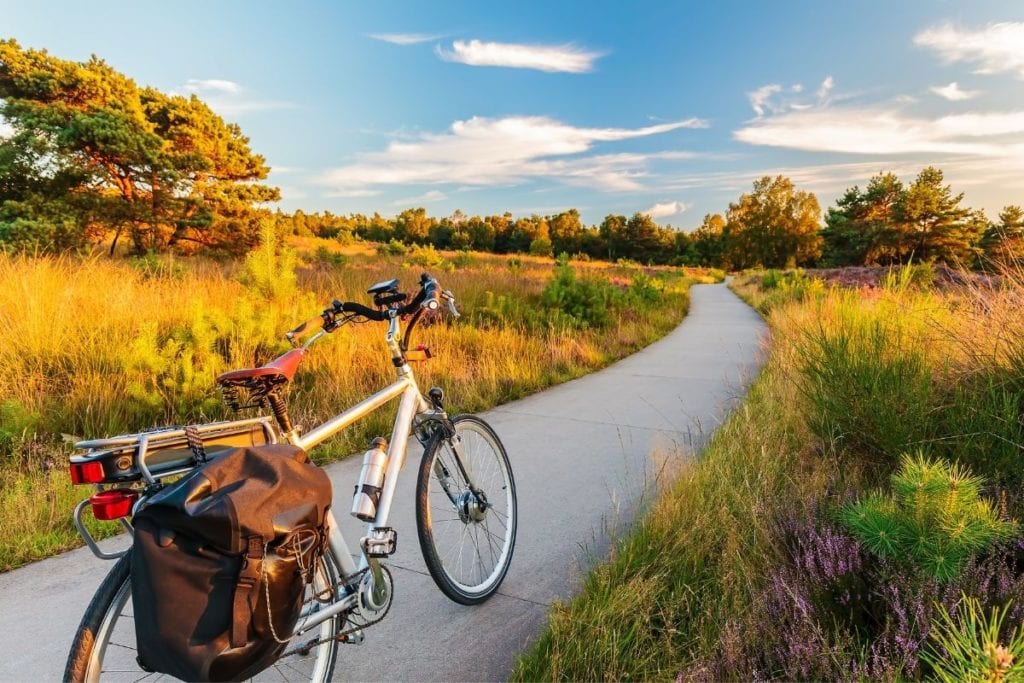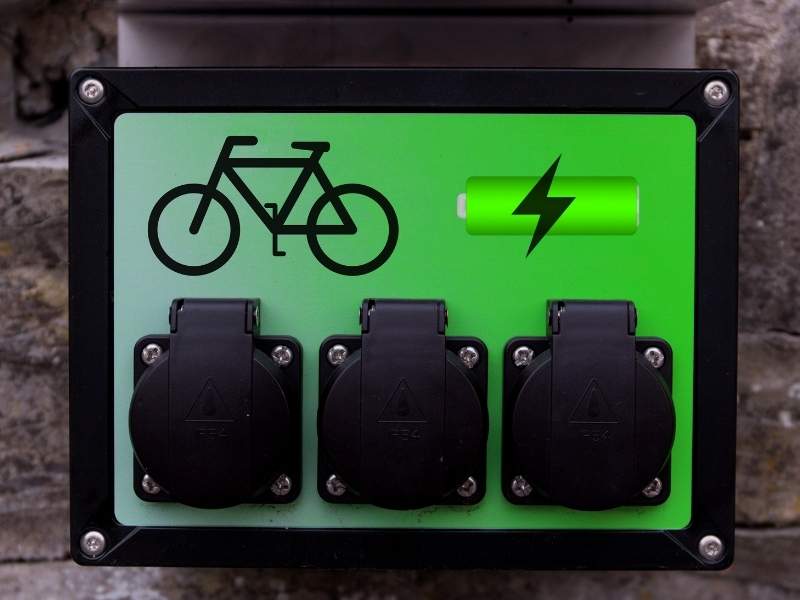Last Updated on 26 July 2023 by Cycloscope

Prepare Your E-Bike for Bicycle Touring! Carrying a replaceable battery on your long-distance e-bike tour is one of the five compulsory things you must consider as you’re preparing for the tour.
Going on a long-distance tour with your electric bike might sound enthralling. However, there are certain things you must do to prepare your prized e-bike before hitting the road.
But is it worth taking your e-bike for a really long road trip? It’s worth it because electric bikes are reliable companions for riders who aim at gaining speed, controlling the bike, maintaining body fitness, and having fun while riding it.
Riding your e-bike for miles can be tricky and arduous. That’s why we’re sharing five expert tips to prepare your e-bike when you’re planning a long-distance trip.
Let’s find out those tips in detail in the following sections.
Prepare Your E-Bike for Bicycle Touring
1.Know Your Bike Properly Before Riding

Starting on your e-bike with the prospect of riding hundreds of kilometers will first require you to know your two-wheeler properly. You might wonder what’s the point since you already know your bike inside and out.
Well, you didn’t take on a long-distance tour before; that’s the point. You can’t be sure by skimming through the map exactly how the tracks will be out there.
It’s important that you make sure your e-bike can handle the long bumpy and muddy roads ahead. Like electric bikes with pedal assist will require you to pedal away in order for the motor to function.
So, if you have a type-1 (pedal assist) bike, you must consider what distance you can cover with its approximately 20mph mileage. It will give you an idea about handling.
Let’s discuss a few aspects of your e-bike that you must know and consider before getting on with it:
- Type: Basically, there are three types of electric bikes: type-1, type-2, and type-3.
The type-1 e-bikes come with a pedal assist function with which you can achieve 20mph speed as you pedal along the way. The motor will intuitively add up to your pedaling to help you gain momentum.
The type-2 is a ‘throttle only’ electric bike that allows a rider to introduce the throttle mode which doesn’t need the assistance of pedaling to speed up to 20mph. But the less you pedal, the quicker the battery exhausts.
The type-3 is the only legal ‘pedal assist’ e-bike that can go as much as 28mph. You can’t ride it unless you’re seventeen and wearing a helmet is mandatory while riding. Like the above two, no driver’s license is required.
Check what type your e-bike actually is, so you can plan the best route and path that you can take.
- Motor: Does your e-bike have a mid-drive motor, hub-drive motor, or rear hub-drive motor? If it’s a mid-drive motor, it’s effective but an extra weight will add to the bike. However, a hub drive will interfere with the bike handling while the rear hub drive may aid in controlling the bike speed and weight more than the former two.
- Range: Different electric bikes can cover different ranges of distances on a single charge. Check how far your bike will be able to take you before you need to recharge it again. This knowledge can help you locate charging points along the way.
- Power & Speed: It’s essential to have a clear idea about the power and speed your electric bike can produce. You’ll face speed limits and lane restrictions while crossing cities and states.
- Battery Specifications: Although a bigger batter will give you longer ranges on the road, it will also load more weight onto the bike as you go. In this case, the most suitable battery should be between 350 Wh and 450 Wh for you.
2. Check the Battery Life and Condition

As long as you’re not planning on switching to a bus or train in the middle of your e-bike journey, it’s mandatory that you recheck its battery life and condition at least the night before you leave your house. Make sure your battery is fully charged.
A fully charged battery will carry you up to forty to sixty miles. You should be okay with that if you’re not planning to stretch your trip even further. In that case, you’ll have to install a battery with extensive power.
However, you can carry a replaceable battery with you in case your current battery runs out of juice.
3. Avail All Necessary Gears

Don’t forget to arrange the necessary accessories and gear you must have for a successful long-distance trip on your e-bike.
It’s obvious that you’ll have to station somewhere close to nature for resting and staying overnight. Besides, riding and camping gear for bikes are almost the same, irrespective of whether you ride an electric bike or a traditional bike.
Make a comprehensive list of the things you’ll need such as:
- a map (in case, the cellphone map shows glitches)
- hats
- a backpack
- pants
- shoes
- water bottles
- gloves
- sunglasses
- an advanced lock
- a raincoat
Once the list is made, start packing things accordingly. Recheck the stuff against the list once again before leaving.
4. Pre-Training Before Hitting the Road
Make sure you train well before embarking upon a strenuous e-bike trip. Experts suggest that you should train for about twelve weeks to get yourself and your bike ready. Although the required timeline is speculative, you must at least have some amount of practice.
Getting physically used to the riding experience is necessary before firing up the road. Also, you can get the idea of balancing the utility of pedalling and motor powering down the road to cover miles of roads on your electric bike.
5. Carrying or Transporting Your E-Bike
You need to think about transporting your e-bike if you’re planning to start a tour around the world on your e-bike.
To do this, you must select the best mode of vehicle that can let you board with your ride and let you and your bike get dropped off at a convenient location.
There are options, such as:
- Train
- Car (personal, friends, agencies, etc.)
- Truck (hired, agencies, etc.)
The train is considered to be the best mode of transport to carry an e-bike. Carrying it in an airplane would be risky as airlines have a policy not to allow anything containing lithium above 100 Wh. A car or a truck could also be great options depending on your route plan.
The reason why trains, cars, and trucks are so convenient is that you can easily carry your bike and get dropped off at any point you wish.
Final Words
Electric bikes are heavier and more complex than regular bikes. So, you’ve got to be extra cautious when you take out your e-bike on a long tour.
We hope the five amazing tips we’ve shared above will prove to be helpful for you in arranging your long-distance e-bike tour. Rightly planned, such a tour can be fun, but there goes some genuine preparation into the whole process.
Interested in Electric Bicycles for Touring? Have a look at:
- Adventure Trail Riding 101 – How to Pick Your New Electric Adventure Bike
- Review! Genesis Smithfield 2022 – Electric Commuter Mule
- 6 Best Bikes for Plus Size Ladies – Road, Commuting, MTB, Utility, Electric


